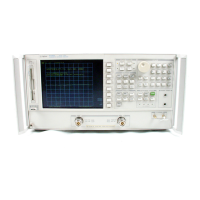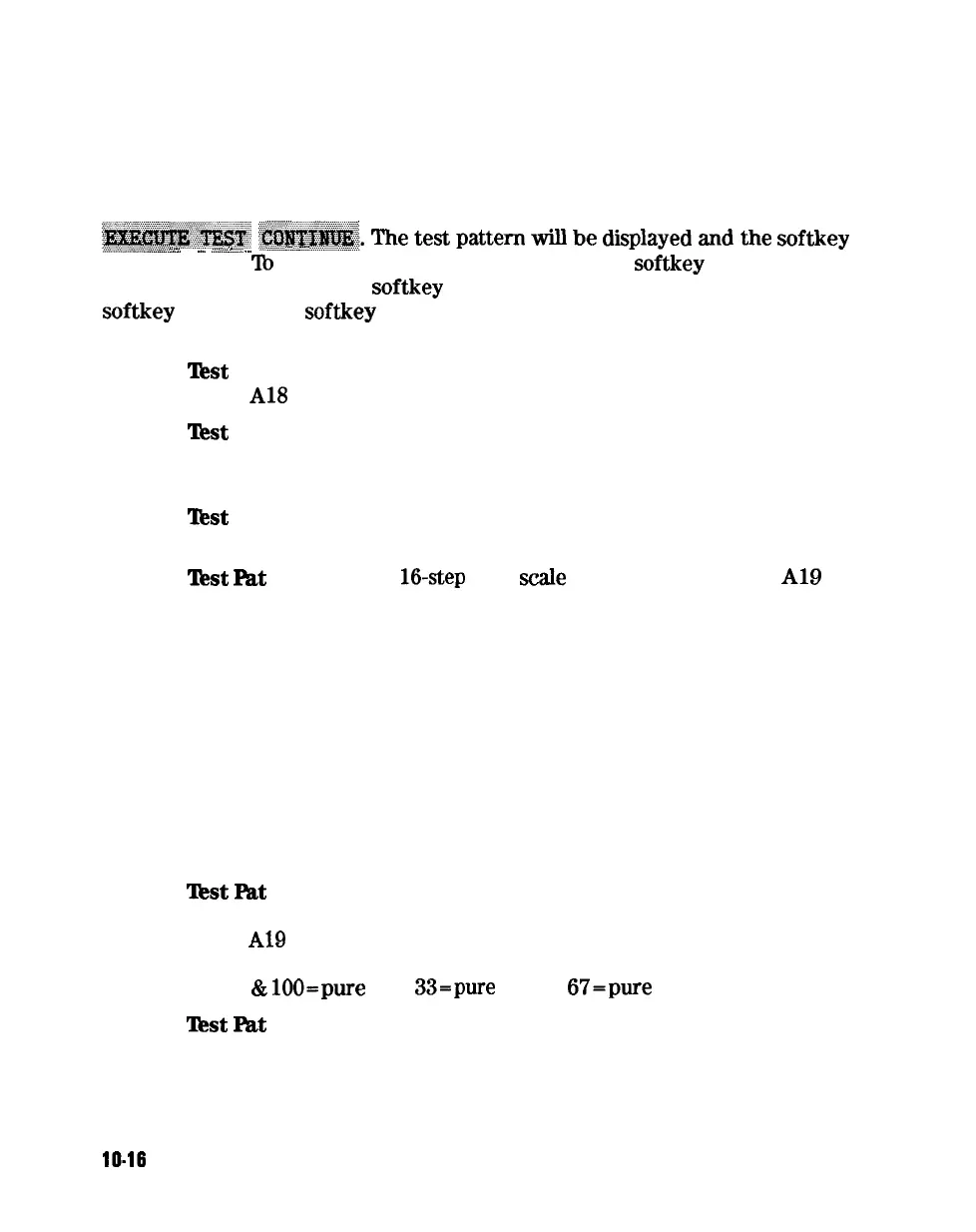Test Patterns
Test patterns are used in the factory for display adjustments, diagnostics,
and troubleshooting, but they are not used for field service. Test patterns
are executed by entering the test number (66 through SO), then pressing
. . . . . . . . . .
. . . . . . . . . . . . . . . . . . . . . . . . .
~~~~~~~
~~~~~~.
me
te,&
pattem
fl
be
displayed
md
the
&aey
~:.:.:..i.:.:.:.:.:.:.:.~.:.:.~.~.~.~.~.~.~.~,~.~,~.~
_
___
.,..
,,,,,,.,.,...
I
.....,.
. . . . . . . . . . . . . . . . . . . . . . . .
.::
.::.:...
labels blanked.
‘Ib
increment to the next pattern, press softkey 1; to go back
to a previous pattern, press softkey 2. To exit the test pattern and return the
softkey
labels, press softkey 8 (bottom softkey). The following is a description
of the test patterns.
66
67-69
70
71
72
73
74
‘I&t Pat 1.
Displays an all white screen for verifying the light output
of the
A18
display and checks for color purity.
‘l&t
Pat 2-4. Displays a red, green, and blue pattern for verifying the
color purity of the display and also the ability to independently control
each color.
‘I&t Pat
5.
Displays an all black screen. This is used to check for
stuck pixels.
‘l&t
Fat
6. Displays a
16-step
gray
scale
for verifying that the
A19
GSP
board can produce 16 different amplitudes of color (in this case, white).
The output comes from the RAM on the GSP board, it is then split. The
signal goes through a video DAC and then to an external monitor or
through some buffer amplifiers and then to the internal LCD display.
If the external display looks good but the internal display is bad, then
the problem may be with the display or the cable connecting it to the
GSP board. This pattern is also very useful when using an oscilloscope
for troubleshooting. The staircase pattern it produces will quickly show
missing or stuck data bits
Test Pat 7. Displays the following seven colors: Red, Yellow, Green,
Cyan, Blue, Magenta and White.
‘Ibest
Fat
8. This pattern is intended for use with an external display.
The pattern displays a color rainbow pattern for showing the ability
of the
A19
GSP board to display 15 colors plus white. The numbers
written below each bar indicate the tint number used to produce that
bar (0
&
loo-pure
red,
33=pure
green,
67=pure
blue).
‘I&t
Fat
9. Displays the three primary colors Red, Green, and Blue at
four different intensity levels. You should see 16 color bands across
the screen. Starting at the left side of the display the pattern is; Black
four bands of Red (each band increasing in intensity) Black four bands
lo-16
Service Key Menus and Error Messages

